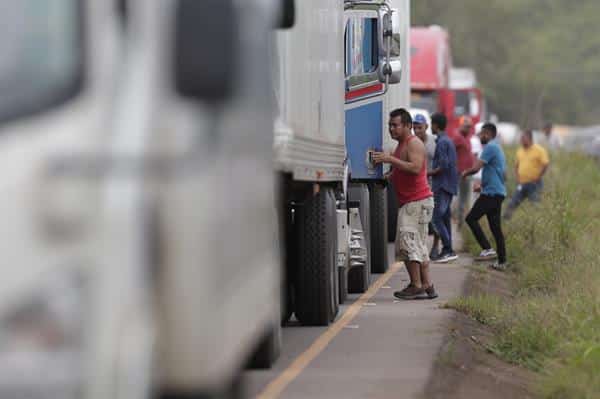The Social Outbreak in Panama Needs a Political Solution
What brought it on?

The sharp increase in the cost of living is seriously aggravated by rampant social inequality and widespread corruption
By Enrique Gomáriz Moraga (Confidencial)
HAVANA TIMES – The social unrest affecting Panamanian society over more than two weeks is the product of three cumulative factors that have interacted to cause a perfect storm: a sharp rise in the cost of living, stark evidence of social inequality, and a drop in the credibility of the government, due to signs of corruption and a clumsy handling of the crisis.
The unions and social organizations have been the channel of social unrest caused directly by the high prices of fuel and basic products, which constituted the fundamental initial demands of the protests. Since the beginning of the year, prices have been increasing, until, for example, a gallon of gasoline reached $5.17 in June. It may not seem like such a high price on the international scene, but it is an unaffordable leap for a large part of the Panamanian population.
The problem of the sharp increase in the cost of living is seriously aggravated amid the rampant social inequality. Panama suffers from the dissociation of two spheres of consumption. The one coming from the high salaries obtained by the professionals of the two main economic enclaves (management of the canal and international banking services) and the one formed by the workers who keep the costs of these services low, as well as the rural and indigenous population. Panama City has the most expensive restaurants in the region, next to the humblest street food carts. And this inequality extends to most other branches of consumption in the country. With the aggravating reality that it is the higher level of consumption that is preferably exposed in the media.
In this context, corruption scandals appear in a government that did not adopt any measure to alleviate the sudden jump in inflation, until the protests explosively burst into the streets. Faced with the avalanche, President Laurentino Cortizo agreed to promote emergency measures, beginning by lowering the price of gasoline from the current 5.17 to 3.95 dollars a gallon. But the protest had already acquired a dimension and a dynamic that was difficult to contain.
In fact, the agreement reached between the government and the most relevant social coordinators, the National Alliance for the Rights of the Organized People (ANADEPO) and the Alianza Pueblo Unidos por la Vida, has not managed to stop the protests. ANADEPO representatives were forced to undo the agreement alleging that “the people in the street do not accept what was agreed.” Better luck has befallen the negotiation with the National Coordinator of the Indigenous Peoples of Panama (COONAPIP), which has agreed to lift the blockade of the highways, while a High-Level Inter-institutional Commission is in session for priority attention to the various demands of the indigenous peoples of the country.
On the contrary, in Panama City and other provincial capitals, several organizations have maintained the demonstrations, including the powerful construction union (SUNTRACS), which has blocked the main arteries of the country’s capital.
The Cortizo government and the different unions and indigenous community representatives, have undertaken new negotiation initiatives, now using the Catholic Church as a mediator and with the support of the Ombudsman. However, the coordinators in the negotiations that began last Thursday are aware that the most radical segments of the protest do not want a quick negotiation and that the beginning of the assaults on shops may lead to an open confrontation with the security forces, which have already been used to clear some main streets.
Under these conditions, everything indicates that this social explosion, which was born quite spontaneously, will hardly have channels in the political system and that it is highly probable that its end will produce painful ruptures in the Panamanian social fabric.





